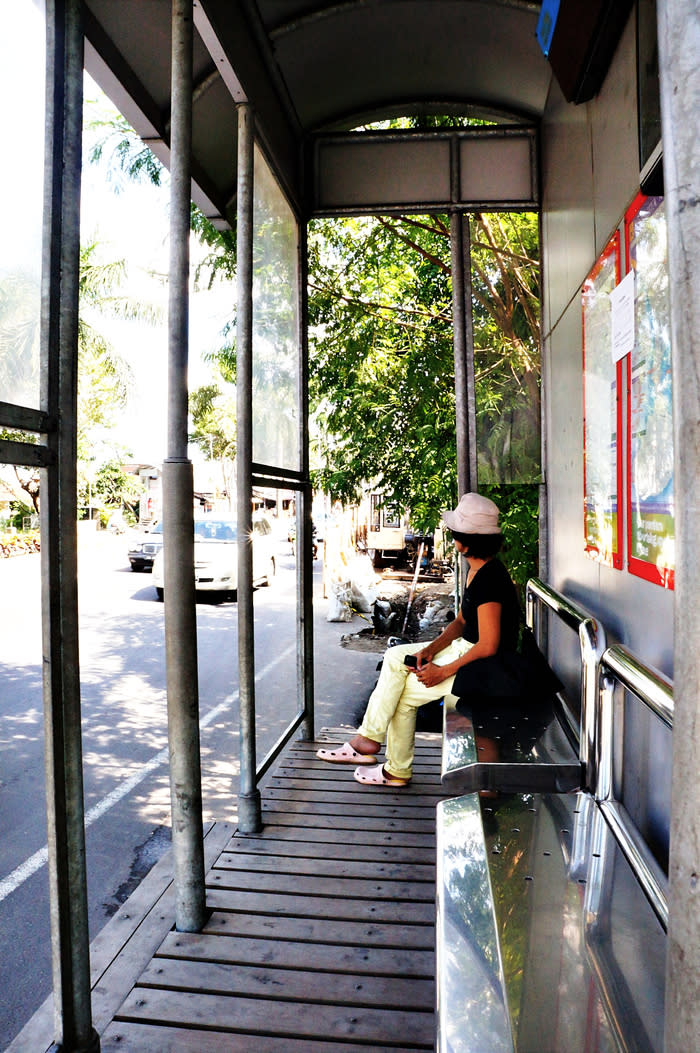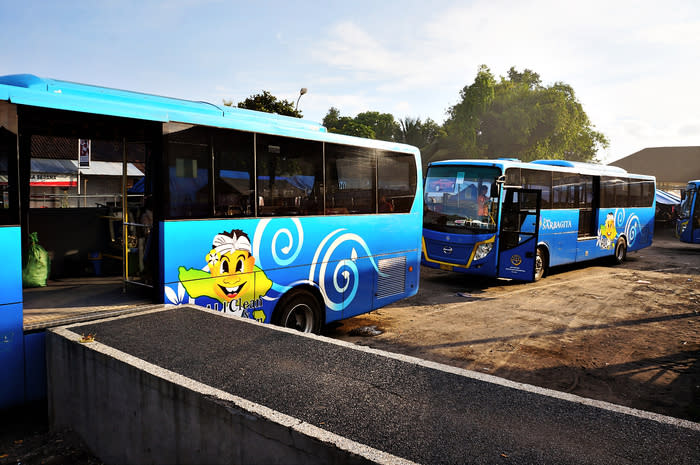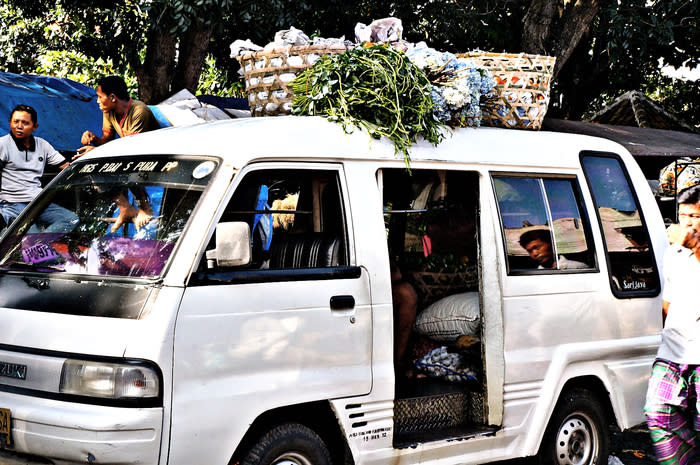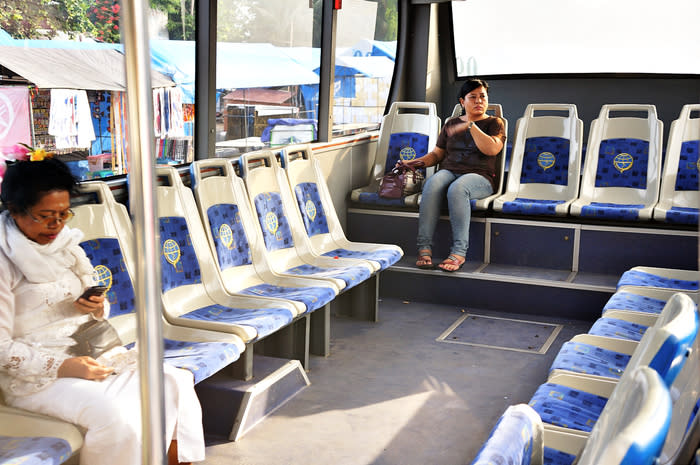Bali’s public transportation taking baby steps to improve
Bali may be a world famous tourism site with a myriad of swanky cafes and luxurious hotels, but the paradise island is still yet to have any solid mass public transportation facility.
Aside from taxis and self-employed locals offering motorcycle rides at distance-determined prices, you will notice the lack of land public transport in Bali.
This is quite unusual compared to many other Indonesian big cities that are crowded with hordes of buses and minivans. This situation raises the question of how the people actually get around on the island.
A few years back, you could still find bemo-ancient modified minivans- on Bali’s streets, but the Bali chapter of Land Transportation Owners Organization (Organda) reported last year that the number of bemo in Bali has greatly diminished, leaving the island with only 40 percent of its operating armada because locals prefer private vehicles over public transport.
Authorities responded by launching the state-owned Trans Sarbagita bus program, which is similar to Jakarta’s Trans Jakarta busway system, where buses serve the main roads, stopping only at designated places, with the support of feeder vehicles.
While the Bemo was a great choice of transportation for short distance traveling, taking longer journeys can be troublesome because it means having to switch cars –and, naturally, pay fares – multiple times.
Currently, some of the bemo armada is being transformed into feeder vehicles – carrying passengers from the rural streets to the Trans Sarbagita bus stops. It was launched in 2011 and Trans Sarbagita is currently operating on two corridors: one serving the Nusa Dua to Batu Bulan route, and the other connecting Denpasar with Jimbaran. A third route, which includes the bus going inside the Ngurah Rai Airport, will be introduced later this year.
“[Trans Sarbagita at the airport] will also be an attempt to attract more people to use public transport, as a solution for congested traffic going in and out of the airport,” Dewa Putu Punia Asa, the chief of the Transportation, Information and Communication Services (Dishubinfokom) for Bali, said as quoted by Antara news agency.
Despite enjoying quite a monopoly in the South Bali area, Trans Sarbagita has not yet become the preferred mode of transport as locals still lean toward the use of private vehicles to get around.
A recent survey done by the Faculty of Social and Political Sciences at Udayana University in Bali says that only six percent of their respondents have ever used the Trans Sarbagita. Yet, the rising number of passengers from year to year shows that Trans Sarbagita is slowly gaining favor. Passenger numbers rose from 205,101 in 2011 to 855,580 in 2012.
“The average usage of Trans Sarbagita by 2,886 people per day in 2012 shows that the bus is having success in reducing traffic congestion and fuel consumption,” I Ketut Teneng, Bali administration’s spokesperson, said.
Adit and Oka, drivers of the Trans Sarbagita, confirmed the claim. “During the rush hour it can get very crowded in the bus.”
Trans Sarbagita’s future plan, which is displayed in most of the bus stops, involves an extensive network of routes covering significant areas, mostly in the South and the Central Bali areas. Intra city buses and travel van services will be used in other areas on the island that are not part of the plan.
Meanwhile, those thinking of heading South to areas such as Gilimanuk, Singaraja, usually go to the hub that is Karangasem Ubung Terminal, north of Denpasar, to hop on buses heading to these areas.
What remains of bemo services are still thriving in the long-distance-journey market.
Other means of transportation are currently still on the planning table or still being deliberated. Regent Putu Agus Suradnyana from Buleleng area north of Bali has stated that his area's Kubutambahan village has been declared a suitable place to build another airport in Bali by the Ministry of Transportation, while Governor Made Mangku Pastika said that he already received the blessings from local religious figures to build a monorail – provided that he could find suitable funds.
Read also:










